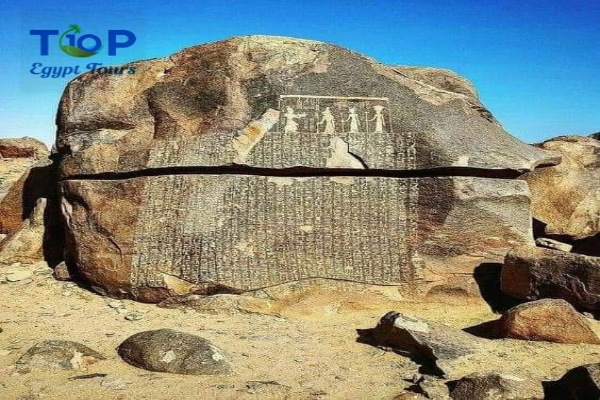The Famine Stela also known as the Stela of Djoser, is an ancient Egyptian inscription located on Sehel Island in the Nile River near Aswan, Egypt. It tells the story of a seven-year drought and famine that occurred during the reign of Pharaoh Djoser of the Third Dynasty.
Location Of The Famine Stela
The stela is inscribed into a natural granite block and is about 2.5 meters tall and 1.5 meters wide. The text is written in hieroglyphs and is divided into 32 columns.
History Of The Stela
The stela begins by telling the story of how Djoser prayed to the god Khnum for relief from the famine. Khnum appeared to Djoser in a dream and told him that the famine would end if he built a temple at the First Cataract of the Nile River.
Djoser followed Khnum’s instructions and built the temple. The stela goes on to say that the famine ended shortly after the temple was completed.
It is an important historical document because it provides insights into the religious beliefs and practices of the ancient Egyptians. It also shows how the ancient Egyptians dealt with natural disasters such as drought and famine.
The stela is also significant because it is one of the oldest known inscriptions in Egyptian history. It is believed to have been inscribed during the reign of Djoser, which means that it is over 4,000 years old.
The Famine Stela is a popular tourist attraction and is one of the most important archaeological sites in Aswan. It is a must-see for anyone interested in ancient Egypt or the history of the Nile River.
In this article, we uncovered for you the Famine Stela with Top Ten Egypt. And Browse our complete list of Egypt tours Click Here



Comment (0)